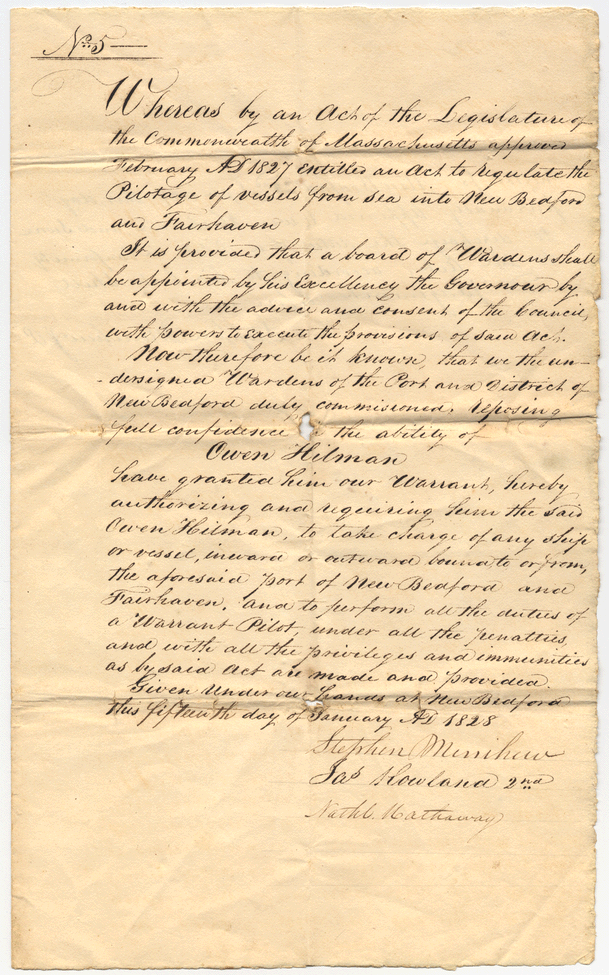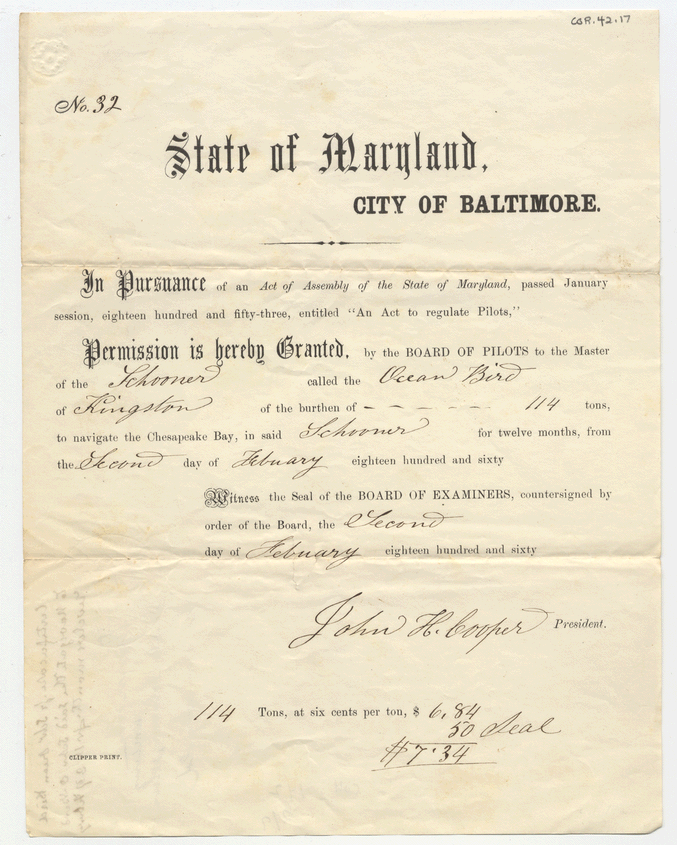A one-page document, varying in size and style, usually with the name of the state or port under whose authority the license was granted, prominently written or printed neat the top. Some early documents are completely hand written. Signatures of local commissioners, board members, or other officials responsible for examining and licensing the applicant will usually appear at the end of the document. Seals or notary stamps might also be found on some examples.
Pilots are responsible for the safe navigation of vessels up rivers, into harbors, and out again to the open sea. During the first half of the nineteenth century, pilots received their certification through the state within which the harbor was located. The states had the power to require pilotage in and out of their ports, and in the absence of any Federal legislation they provided their own regulations for pilots. This was often conducted by a state-appointed board examiners, or commissioners, who handled the examinations and licensing of the pilot applicants, as well as the licensing of pilot boats.

This License (No. 5) was granted by the Board of Wardens established by Massachusetts State law, to Owen Hilman, 15 January 1828. It authorized him “to take charge of any ship or vessel, inward or outward bound, to or from the aforesaid post of New Bedford and Fairhaven, and to perform all duties of a Warrant Pilot…”

This is a Pilot Boat License (No. 32) granted by the Maryland Board of Pilots to the Master of the OCEAN BIRD, and effective for 12 months from 2 February 1860.
